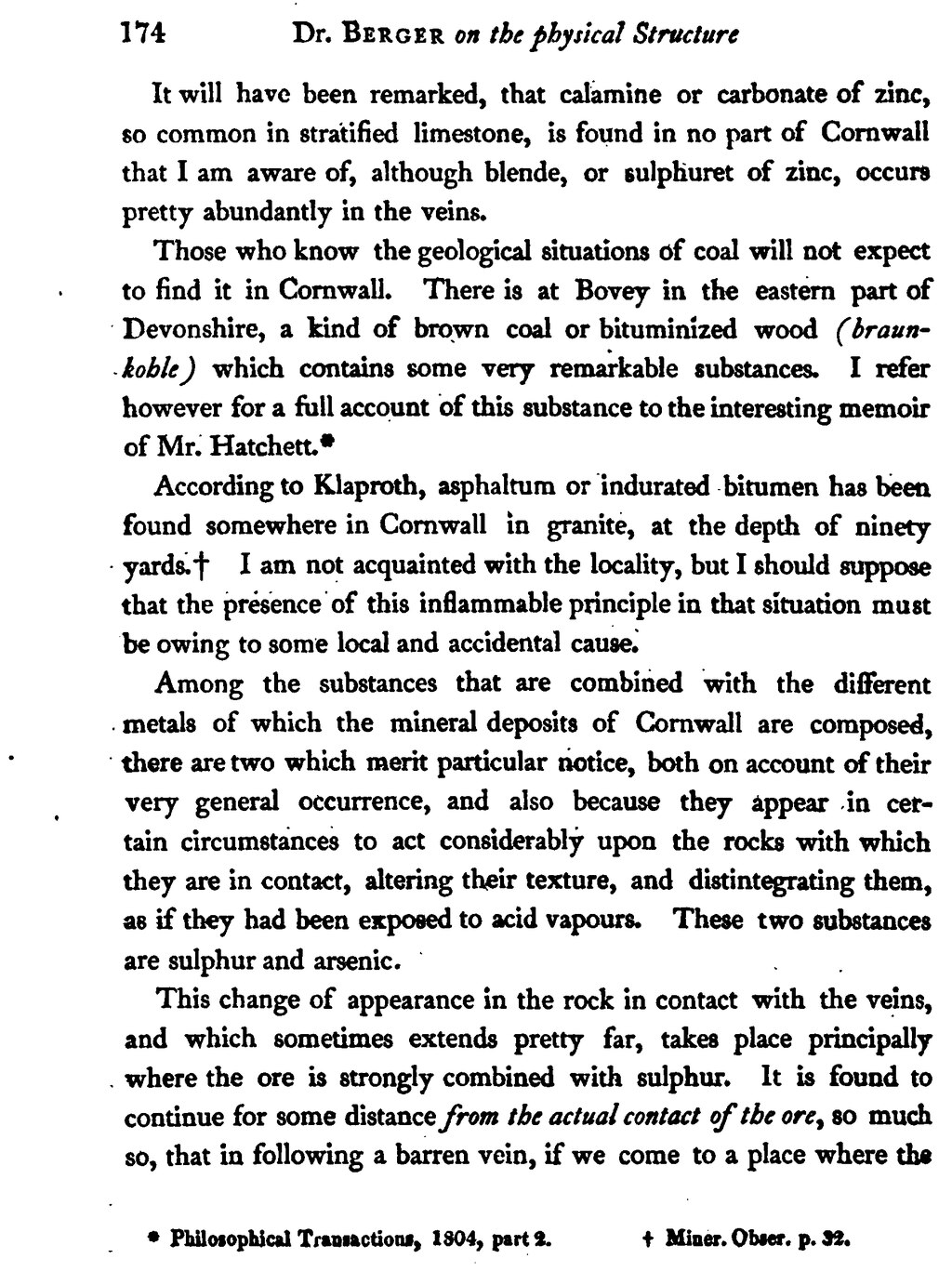It will have been remarked, that calamine or carbonate of zinc, so common in stratified limestone, is found in no part of Cornwall that I am aware of, although blende, or sulphuret of zinc, occurs pretty abundantly in the veins.
Those who know the geological situations of coal will not expect to find it in Coenwall. There is at Bovey in the eastern part of Devonshire, a kind of brown coal or bituminized wood (braun-khole) which contains some very remarkable substances. I refer however for a full account of this substance to the interesting memoir of Mr. Hatchett.[1]
According to Klaproth, asphaltum or indurated bitumen has been found somewhere in Cornwall in granite, at the depth of ninety yards.[2] I am not acquainted with the locality, but I should suppose that the presence of this inflammable principle in that situation must be owing to some local and accidental cause.
Among the substances that are combined with the different metals of which the mineral deposits of Cornwall are composed, there are two which merit particular notice, both on account of their very general occurrence, and also because they appear in certain circumstances to act considerably upon the rocks with which they are in contact, altering their texture, and disintegrating them, as if they had been exposed to acid vapours. These two substances are sulphur and arsenic.
This change of appearance in the rock in contact with the veins, and which sometimes extends pretty far, takes place principally where the ore is strongly combined with sulphur. It is found to continue for some distance from the actual contact of the ore, so much so, that in following a barren vein, if we come to a place where the
